Your time is NOW
What would be lost if your library service was eliminated tomorrow?
If there is one take-home message from Creative Communities it is this:
Seize the moment: Your time is NOW!
It has never been a better time to be working in a public library, especially in Victoria. And, as this report demonstrates, it has never been a better time to invent new ways to foster ‘creative communities’ on a scale that few other cultural organisations can match.
But in order to explain why, I need to make a tiny historical detour.
Think about the birth of public libraries in Victoria. The ‘free library’ movement variously manifested itself in facilities and programs associated with the Mechanics’ Institutes and the School of Arts movement. These libraries were mainly subscription based, and designed for the working men who were vital to the success of a nascent industrial revolution. They weren’t really ‘free’. The public library landscape, as we know it today, emerged in the 1850s. The first ‘public’ library in Australia was the one we are in now, which opened in 1856. But the legislation that governs your extended network of municipal libraries, and others throughout Australia, is a twentieth century phenomenon. So, we’re talking about a relatively young movement; a movement that is still evolving, has already had to adapt to remarkable change, and is now in a period of intense transition.
Now, another set of historical forces is at play.
People are concerned about the diminution of public things – our parks, our meeting places, our points of intersection and exchange. Contemporary research shows an unmistakable trend towards rising inequality in Western democracies, including Australia, an inequality both of income and of opportunity.
But we also have, paradoxically, more avenues and tools for participation and creative expression at our fingertips. We have more knowledge about the importance of place (and place-making) to collective identity, well-being, safety, creative entrepreneurship and sustainability. We have a renaissance in library architecture and space design, enabled by the greater affordability of building materials and the enthusiasm of architects for what libraries do and can do in the future. We have community leaders willing to take risks and invest in new library buildings on a scale that was unthinkable in the 1990s.
We have contemporary library research at hand, which is showing us what people are actually doing in these library spaces, what they want to do, how much it is costing, and how much it is saving (in financial, social and cultural ways).
And, best of all, we have you. We have in you creative leaders who are absolutely in the vanguard of change. Leaders who are thinking and acting strategically – and not just talking about it. Leaders who are prepared to commission original research and to use its insights to advocate on behalf of the library services you lead. Leaders who are building new, beautiful, flexible and dynamic library spaces, with all the hullabaloo that goes on behind the scenes in order to do so.
Leaders who are investing in the skills development needed to create welcoming, socially inclusive public places; the skills to go out into your communities and make new connections, liberate creative potential, and, fundamentally, to change lives.
The evidence suggests that this confluence of forces is producing a moment of cultural expansion and opportunity for Victorian public libraries. A moment that has, until now, been only partially understood and documented.
Culture is multidimensional; libraries are multidimensional
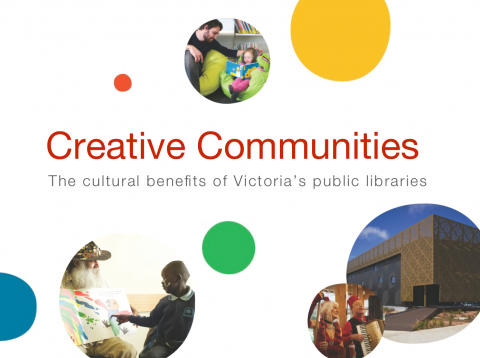 For the people who travelled long distances to come to workshops, went out of their way to be interviewed, or sent us comments if they couldn’t make it; for the 3000 people who participated in our online survey and the 500 or so library staff members who completed another one; for the thousands of people of all ages who come to hear stories, learn to use iPads, listen to a band, practice in a choir, or hear children singing as they pore over today’s newspaper; for the people who attend a literary festival, listen to an author, or encounter a ‘dangerous’ idea; those who are planning a revolution or just playing chess; for the thousands of artisans, visual artists, writers, historians, performers, digital media producers and musicians who use your libraries as incubators for their creative endeavours – these people experience public libraries as multifaceted, multidimensional cultural spaces. And, if not their local public library, they will use another public library down the road that lifts their spirits and gives them access to space, resources, collections, people, and, sometimes, good coffee.
For the people who travelled long distances to come to workshops, went out of their way to be interviewed, or sent us comments if they couldn’t make it; for the 3000 people who participated in our online survey and the 500 or so library staff members who completed another one; for the thousands of people of all ages who come to hear stories, learn to use iPads, listen to a band, practice in a choir, or hear children singing as they pore over today’s newspaper; for the people who attend a literary festival, listen to an author, or encounter a ‘dangerous’ idea; those who are planning a revolution or just playing chess; for the thousands of artisans, visual artists, writers, historians, performers, digital media producers and musicians who use your libraries as incubators for their creative endeavours – these people experience public libraries as multifaceted, multidimensional cultural spaces. And, if not their local public library, they will use another public library down the road that lifts their spirits and gives them access to space, resources, collections, people, and, sometimes, good coffee.
But for those who don’t use a public library, don’t attend events at a public library, have no need for free wi-fi or downloadable e-books and magazines, have never needed a library for refuge from fires, floods and social isolation, and have never partnered with a public library on any creative or learning project, for these people faulty equations abound. For them, the public library equals books; for them, the public library is nice but dowdy, somewhat quaint.
This report, Creative Communities, should give you confidence when talking to these people.
And here are the reasons why.
The term ‘culture’ is certainly complex. It’s easy to get tied up in knots about its various meanings – is it everything that makes up human society, or is it just a proxy for the arts?
Whatever definition we use, it doesn’t matter. Our findings show that your library services are performing an outstanding, if largely unrecognised role in relation to any definition of culture we might use.
These findings are grouped under six lenses, which serve as an explanatory framework as well as providing a springboard for a range of future propositions.
Six lenses
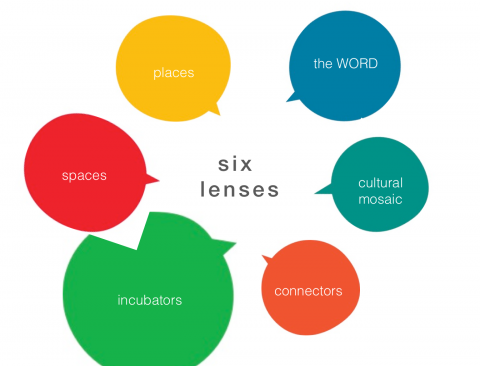
The six lenses of cultural benefit
Your libraries generate cultural benefits as public places – safe, non-commercial and culturally meaningful places. They are often the nucleus for cultural precinct building (think Geelong, Kerang and Docklands). They are sites that hold in trust diverse, changing and responsive collections for the present and future of society.
Library spaces have a material, psychological and creative dimension. In surveys, workshops and interviews, the characteristics of library spaces and the importance of space design were strongly emphasised. Your libraries are seen as current or potential spaces within which storytelling, serendipitous discovery and imaginative play can occur.
Libraries are incubators of creativity. They facilitate cultural expression and imaginative thinking, and support culture making in a variety of modes and forms.
Libraries connect people with each other; they connect people with art, literature, ideas and many forms of creativity. They forge cultural links across precincts, communities and regions, and with other culture-making organisations and individuals.
They support Australia’s rich cultural mosaic. A working philosophy of harmony and social and cultural cohesion underpins the public library service ethic, and the role libraries play in supporting cultural diversity is highly valued by community members.
And, importantly, your libraries are places that revere the written and spoken Word, and literacy in all its guises. This is an increasingly important role, which is often taken-for-granted. Without language our capacity to be understood is compromised; without literacy our hopes for a better future, for economic independence and fulfilling work are stymied; and without both our innate capacity for imaginative thought and emotional expression is thwarted.
These six lenses are interdependent and mutually reinforcing. They also serve as preconditions for the aggregation of cultural benefits in the future. In other words, when present they allow or enable certain things to emerge, and provide a focus or frame for further action. But if there is one primary precondition, it is space. Without flexible, contemporary, well-designed library spaces then all of the momentum catalogued above risks being compromised.
Cultural research requires cultural methods
Cultural analysis is different from economic and social analysis; it welcomes narrative views, metaphors, feelings and associative thinking. The specifically cultural approach we developed for our workshop and survey designs yielded a culturally rich response. A set of responses that was generous, poetic, provocative, dreamlike, moving, grateful, aspirational, imaginative, curious, hopeful and real. In the words of your clients, the public library is…..’quiet, clever, curious…imperative, indispensable, vital…a safe place that demands nothing but offers everything…a place where ideas fill the air’…the library is ‘like social ‘glue’; it’s ‘like fungi (everywhere and thoroughly connected); it’s even something ‘delicate, a thing of extraordinary beauty’. Anticipating the opening of the new Bendigo Library, a resident of Woodend sums up: “It will be the new Nirvana.”
The cultural benefits being generated by your libraries, as evidenced in this report, show extraordinary value for money. It is smart, cost effective and efficient to spend money on libraries, on cultural institutions that produce radial benefits for their communities and serve as a cultural touchstone for Victorians. It is deeply efficient to promote social tolerance, inclusion and literacy. And it is deeply efficient to share resources, talent and creative opportunities. This is culture as a virtuous cycle: a source of cohesion, creativity, inventiveness, efficiency and productivity.
The digital revolution
The economic, social and cultural transformation we are witnessing today is as great as the Industrial Revolution that gave rise to the free library movement. Our research shows that the greatest flowering of the new public library is occurring in Europe – particularly the Netherlands, and the Scandinavian and Nordic countries – parts of North America, New Zealand and Australia. Victorian public libraries are in the vanguard of a movement that is emergent, and, therefore, often hard to contain and describe. There is more work to be done. Hopefully, this report presents new knowledge, arguments, evidence and the inspiration to continue this work.
I started today’s talk by asking you to reflect on what would be lost if your libraries were eliminated. You named things like engagement, free resources, a community hub etc.
These are cultural losses.
Sometimes, we don’t recognise what we’ve got until it’s gone.
If Victorian public libraries didn’t exist, we would lose culture – in all its glorious intangibility; culture, manifesting in ways that are understandable and ways that aren’t; culture, sometimes bristling, abrasive and dark; at other times, illuminating, warm and inspired.
So, seize the moment. Your time is NOW!
This is an edited version of speech notes I used at the launch of Creative Communities: The cultural benefits of Victoria’s public libraries held at the State Library of Victoria on 8 August 2014.
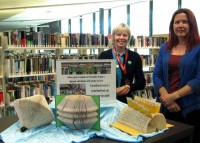
Echuca Library
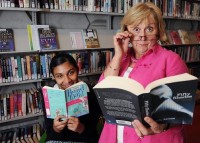
Melton Library
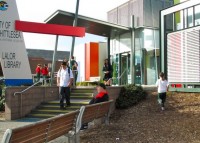
Lalor Library
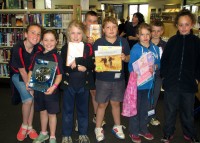
St Arnaud Library
Acknowledgments
Thanks to Dr Sally Gray, for being the most intelligent and insightful co-researcher anyone could hope for. Thanks to the State Library of Victoria and Public Libraries Victoria Network. Special thanks to the Knowledge for Advocacy project workgroup.
State Library of Victoria (2014) CREATIVE COMMUNITIES: The Cultural Benefits of Victoria’s public libraries. Report now available here.


